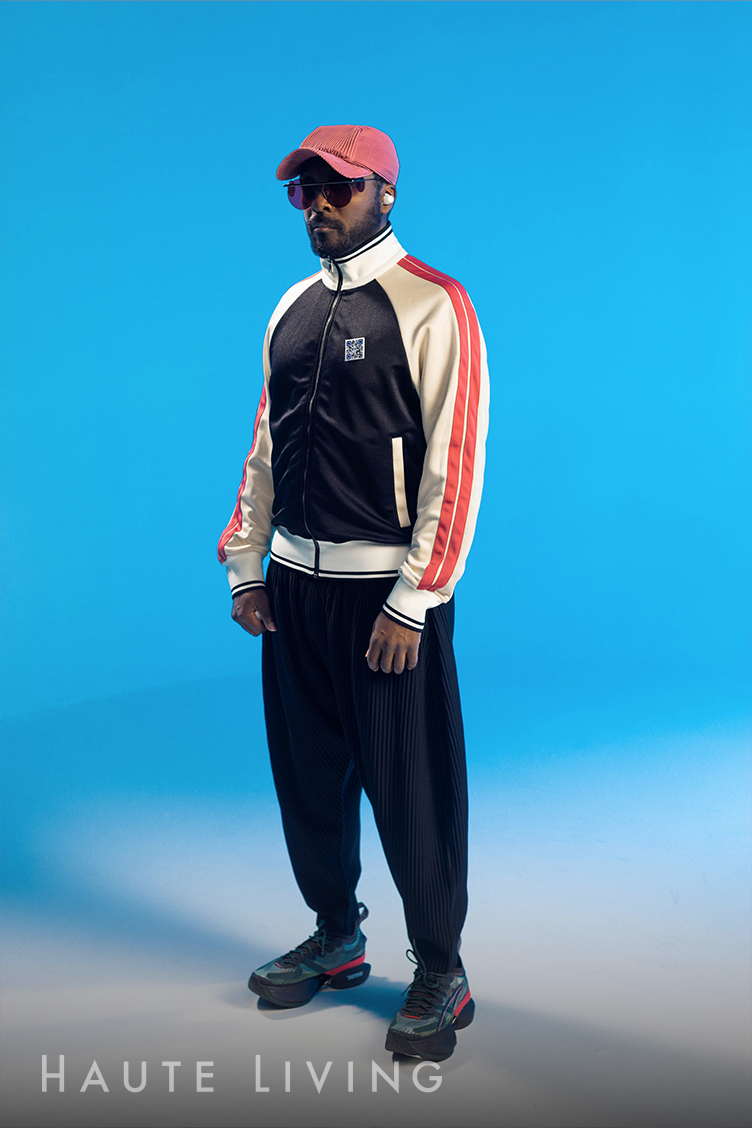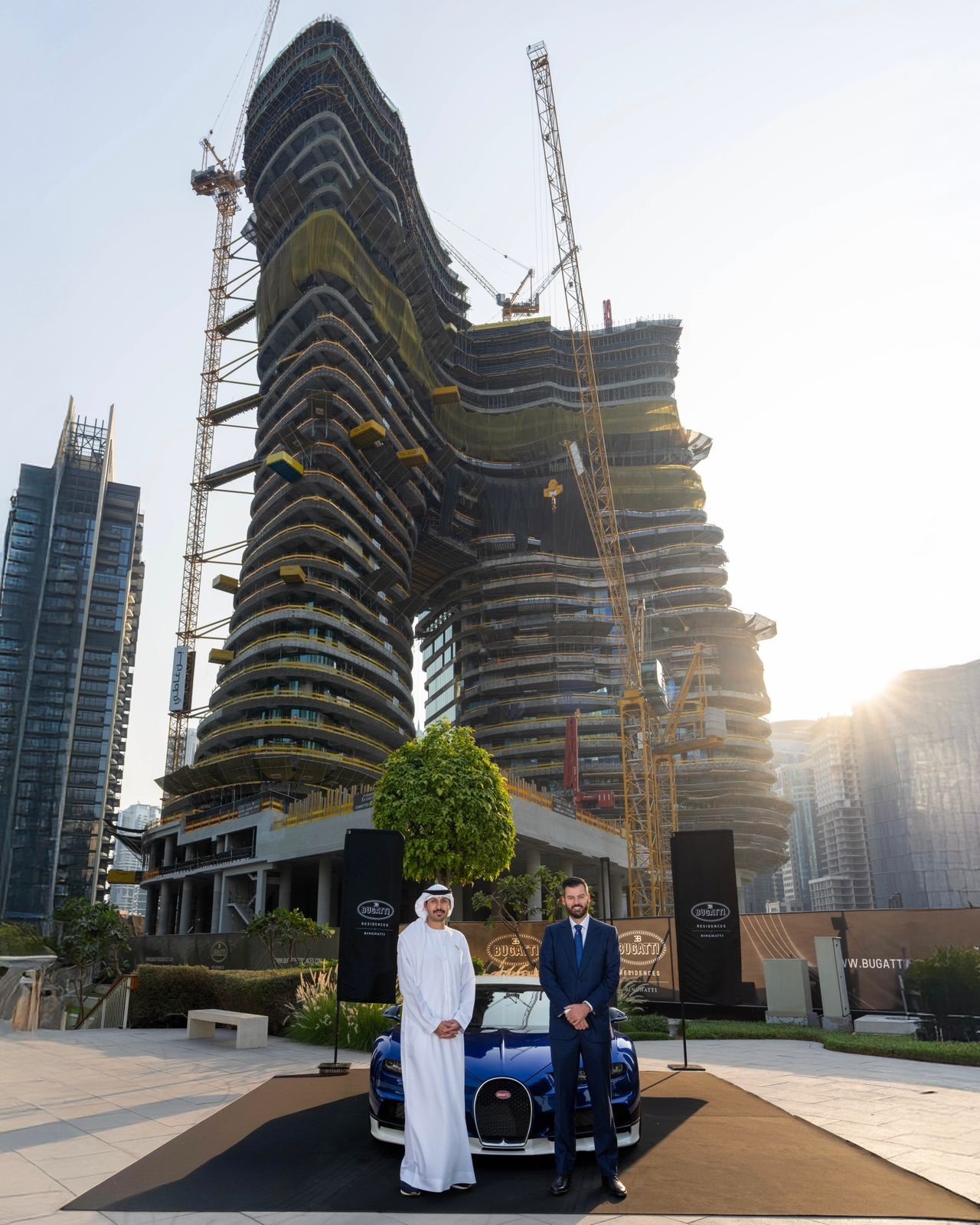With New Innovations In Tech, will.i.am Is Ready To Usher In A Whole New Era
 Photo Credit: STERLING HAMPTON IV
Photo Credit: STERLING HAMPTON IV
There aren’t many things will.i.am hasn’t done in his 49 years, nor hats he hasn’t worn: creative innovation advisor, futurist, multi-platinum-selling and nine-time Grammy-winning musical artist, tech entrepreneur, entrepreneur, founder, CEO, coach (on The Voice UK edition for 13 seasons), host (of “The FYI Show” radio program on SiriusXM), investor (the FYI Web 3.0 creativity and productivity tool, automotive, consumer-tech, fashion, food and beverage, software, and telecom), the first F1 Artist in Residence in history, humanitarian, two-time Super Bowl Halftime Show performer, Emmy and CLIO Award winner, Harvard graduate, and now — in his own words — “operationist.” The reason for this incredibly definitive epithet is that the Black Eyed Peas frontman is fully charting his own course, steering his own wheels, and becoming his own boss. He is calling the shots, and not just creating history — but creating the future — at the same time.
That being said, on December 17, MBUX Sound Drive will make its U.S. market debut, his industry-first partnership with Mercedes-AMG that delivers a groundbreaking interactive music experience. The technology uses software that allows music to react to the way the car is being driven, creating a harmonious relationship between motion and melody. This turns the car into a virtual instrument, transforming an already exceptional driving experience into an emotional, musical journey. Using a suite of sensors and advanced software, MBUX Sound Drive interprets various driving dynamics — such as recuperation, acceleration, steering, and braking — and converts them into musical expressions, allowing the driver to fully engage in real time.
Earlier this year, will.i.am launched RAiDiO.FYI, a first-of-its-kind AI-infused, interactive, and conversational media platform that transforms radio as we know it into a new dimension, connecting consumers deeper with the music, talk radio, and cultural content they love, effectively managing to evolve a 110-year-old medium into something new and fresh.
Haute Living sat down with this jack of all trades — who not only recently graduated from Harvard Business School’s prestigious Executive Education Owners/Presidents Management Program, but who is also now a bona fide case study for his alma mater — about his tech innovations, his early work as a Futurist, and why he will never give up on music (case in point: the Black Eyed Peas are launching their first ever Las Vegas residency, “Black Eyed Peas: 3008 The Las Vegas Residency,” at PH Live at Planet Hollywood Resort & Casino on February 15).
 Photo Credit: STERLING HAMPTON IV
Photo Credit: STERLING HAMPTON IV
Let’s talk about your drive to innovate, first in music and arts, and now in the tech world. How is innovating in tech different, and why has this become your primary focus?
I’ve been working in this field since 2012; I started my first company over a decade ago. And the reason why I love it so much is because I worked — I would say satelited, meaning orbiting around — with Apple, helping them. We were honored and blessed to be able to play a role in the first iPod and iTunes commercials, helping them sell that, and then the iMac. Around 2006, I started working with Beats Electronics. Then by 2007, I told Jimmy Iovine that we should sell; we should make our own hardware and use our music to sell our own stuff. By 2008, we had a prototype of Beats by Dre. So, I was a part of Beats from the beginning as the third equity shareholder, and then, when we sold Beats to Apple [in 2014 for $3 billion], I told myself, I want to start my own company. I started my first company in 2012, an AI team. At that time, I was into natural language understanding and processing, and machine learning. Back then, it was advanced, but compared to now, it was like high school. So, I invested in AI companies early on, like OpenAI, Anthropic, Hugging Face, and Runway. Compared to making music or just doing creative work or videos, it’s more creative, because you are still thinking in a rhyme scheme type of way; things have to have some type of emotional resonance. I’ve been fearless in the past as far as coming up with ideas and pitching ideas to companies, and that’s why I love to work in the tech space. It provides hyperdimensional creativity. While music is great, it’s fun and allows me to rinse out my emotions, it’s a three-dimensional creative realm; technology is like six dimensions of creativity.
Let’s talk about MBUX Sound Drive: the focus behind it, how you created it, and where you want it to go.
Before, you got into a car to go from point A to point B and songs were played. Those songs that were played in the car, somebody sat in a studio for hours to close them into a capture. The only thing you could do was press pause, rewind, forward, and shuffle; you no longer could engage with the song and all of its components. It was left and right, and maybe center or surround sound. That’s it; it’s a captured moment. But with MBUX Sound Drive, you can truly engage with it, because we have more components to the song; it’s no longer just an audio file. It’s a multi-track file where the car is now the instrument. The car is now the DJ, and the car is now the turntables, and you are the DJ. When you drive from zero to five miles an hour, the car is going to behave differently. If you’re going ten miles an hour and you hit a bump and turn left, the song is going to behave differently. Every time you stop at a red light and a stop sign, it’s a slightly different experience. With MBUX Sound Drive, you’re able to capture all of these colorful moments through the world of music. From point A to point B, you’re scoring your route. Every route will render a new version of your favorite song, all done simply by driving.
 Photo Credit: STERLING HAMPTON IV
Photo Credit: STERLING HAMPTON IV
How did you come up with that?
I was in a work session with Mercedes-Benz, and they were like, “We want you to come to a work session to vibe, see what we could come up with — with your vision — and what we are doing with sound and the electric vehicle.” I thought, “All right, cool.” So, I flew to Stuttgart, and they showed me their electric car. I worked at Intel in a Futurist department for three years and the rule of future casting is that if you have an opinion or criticism without a way to fix it, plausibly address it, and press pause on criticism or opinion… because the world is noisy. So, now I’m in studio applying this rule. First note, I had a criticism. Then, we took off. We were going down a street and we turned, banking left. Second criticism. Then we were going down a highway; we passed through a tunnel — third problem. And then we went through a very tight street, fourth issue. I wrote my notes down while we were in the car. I then had to look at each one of them and apply solutions to the issues I had pointed out. Number one, that sounds real, but in a car that has an engine, the sound is not coming from the speakers; it’s coming from the front. The direction of the sound is wrong, and the sound is not just heard, it’s felt; I’m just hearing sounds. Two, if I’m listening to a song in the key of G and yours is F flat, that’s going to cause dissonance, and the dissonance is going to overwork your speaker. I have a solution to that. We’re driving down the street and the banking left in a car that has an
engine in it: you’re going to hear gravity pushing down on gears: I have the solution to that. And so on. I knew I could fix all of these things, and more. And so, two years ago, I was flying back home from that meeting, and I looked at the city. I thought, “Wow, look at this grid.” Every city is a grid, right? I can take a city and map music to it so that when people are driving, they use the city as their metronome, or they use their city as their composition palette. Using this architecture, I have a whole new composition engine. I have a whole new way people can compose. We built this system in two years and now we’re launching MBUX Sound Drive across the entire Mercedes-AMG fleet starting December 17.

Photo Credit: Mercedes-Benz

Photo Credit: Mercedes-Benz

Photo Credit: Mercedes-Benz
What can we expect from the MBUX Sound Drive deployment to market? I hear you have formed some partnerships with music labels, partners, and artists. What can we expect there?
We’re collaborating with Universal, Sony, and Warner Music. We got together with Hit Boy and made some songs from scratch. We also reimagined some Black Eyed Peas songs and Nile Rodgers gave us his freaking hits. It’s really wild to hear Chic in such an immersive, engaging, interactive way. It’s just unbelievable that we were able to manifest this idea, this dream, and that it’s now real.
What exactly is MBUX Sound Drive doing at Basel?
We’re celebrating the fact that MBUX Sound Drive is officially live and within cars that are off the assembly line, sitting on the floor of Mercedes dealerships, and soon to be driven by Mercedes-AMG owners. It’s not every day that a new music experience is thrown into our society to “dimensionalize” our music economy. It’s good for artists and it’s great for our industry — so this came at the right time. Streaming has flattened out: artists aren’t really making the type of money that they used to make when we sold records versus experienced streams. To have a whole new dimension to our economy and a way that artists can get creative and color our environment with sounds and rhythms is truly awesome.
 Photo Credit: STERLING HAMPTON IV
Photo Credit: STERLING HAMPTON IV
You’re constantly innovating. Can you share a bit about RAiDiO.FYI?
I was at CES with Mercedes this year, and met a girl by the name of Supercar Blondie. She has this amazing blog where she showcases all the dopest cars. So, she comes and asks me to tell her about MBUX Sound Drive; she’s a passenger, and I’m driving her. I’m thinking she’s going to be like, “wow.” But I realized something during this demonstration: while the driver gets to hear the full sound, the passenger is not immersed in it; they’re just in the car listening to music, whereas the driver actually feels what’s happening firsthand. So, after I got out of the car with Supercar Blondie, I thought, We need to innovate somewhere else. I got back to the lab and told the team, “When I stop at a red light, I need to be able to talk to the AI and be like, ‘What’s happening? Why is there traffic right now? Give me a different route.’ I wanted to be able to do this over radio, because there hasn’t been a serious innovation in radio since SiriusXM, and radio is really an ally for artists. I wanted to innovate around it. I was thinking, “What if we could have a million people calling in to the station, talking to the DJ or the host, having a million conversations at the same time? We’ll have an AI host, a DJ, a curated selection of music.” It’s fostering critical thinking. We want dreamers. We want freaking critical thinkers. We want folks who have opinions, who are inquisitors, and people who are curious about the world and concerned about it as it unfolds. Let’s engage in this debate. Let’s do it in a place where you don’t have to worry about being judged, about being bullied, about sounding stupid. Critical thinking is the new woke.
Did Harvard help with that? What was your takeaway from your schooling there?
Harvard helped me organize my way of looking at the world; it helped me operationalize better. I’ve always been good at ideation to manifestation, but then, what about operation? It helped me sharpen that other tool in my cabinet.
 Photo Credit: STERLING HAMPTON IV
Photo Credit: STERLING HAMPTON IV
Speaking of your cabinet, you wear many hats and have a variety of different accolades behind you. Is there one that you feel represents you the best currently?
When it comes to music, I was being creative in somebody else’s operation; it wasn’t my operation. I was a creative cog in the system that Universal owned, Interscope, Jimmy Iovine’s operation. I was the creative agent in that operation. And one would think, ‘just because you have success, musicians then have this ego.’ No, that’s not the way it works; if that’s your illusion, you’re going to have a rude awakening. If you’re lucky, you could move from this field, hop into an operation, have success in it, and then move to a different field… and then somebody else puts an operation together for you and leverages your name — but that’s still not a true operation. You just think it is because your ego is telling you that it’s you, but somebody else is doing it all, leveraging your magnet. But if you’re audacious like me, you want to be the operator. I don’t want to be relying upon somebody to operationalize my creativity. But the world is changing, and the only way to change with it is to get as much information as possible. So, I consider myself to be an operationist these days.
With tech so much at the forefront for you, why did you decide to do the “Black Eyed Peas 3008 – The Las Vegas Residency” next year?
We wanted to do the Las Vegas residency because it allows us to do something that we’ve never done before. Once you’ve played stadiums, done arenas, theater tours, small bar tours, played the Grammys, the American Music Awards, the Brits — all the big gigs from the Super Bowls to the World Cups — sent songs to Mars, done campaigns for the NBA, iPod, iTunes, and more, what else is there to do in the world of entertainment? We’ve never done a Vegas residency, so we thought, let’s do that. We know what happened when we put Fergie in the group — that really catapulted us to a different level, coupled with the songs that we wrote. You know, if Fergie was in the group and we didn’t have “Let’s Get It Started” and “Where Is the Love?” we wouldn’t be big. But the combination of big records and Fergie took us to a different level. Then, we added a new member to the group; we added an AI member, Vida. We had to look at the type of experiences fans were going to have, and what people would be curious about. I’m excited, because we’re going to be bringing the first AI residency to Vegas. And why not do it wild?
How do you want to be remembered in history books?
Not history: I don’t want to be known in history. I want to make the future.
What do you hope your legacy will be then, with all that you’ve done in the arts, in tech, and in philanthropy?
Legacy is cool. I like legacy because it’s like, the word ‘leg’ is actually in it, and that means you stood for something. Because without legs, you can’t stand for shit. I also love the word “speck.” The speck is so small. You need spectacles to inspect it. We’re all spectators — but what makes our species is specific, and it’s all those little specifications that make you special. And that’s what makes a spectacular person. But don’t make me specify which part of me you hear; it’s the specificity I just love. “Speck” is a dope ass word — and I get my kicks off of words, right? One day I thought, my name is William, ma. Everybody, all my black friends in school, their name is Jamal, Kamal, Darnell. I got William. I got a boring white name that I hated. So, I was like, “Ma, can I just call myself will.i.am?” It means I have will, I have the will, I am will, I have the will to do, to be whatever I want. I have willpower. Can I just call myself will.i.am? She said, “If that’s what you want to call yourself, sure.” And here I am.
 Photo Credit: STERLING HAMPTON IV
Photo Credit: STERLING HAMPTON IV













